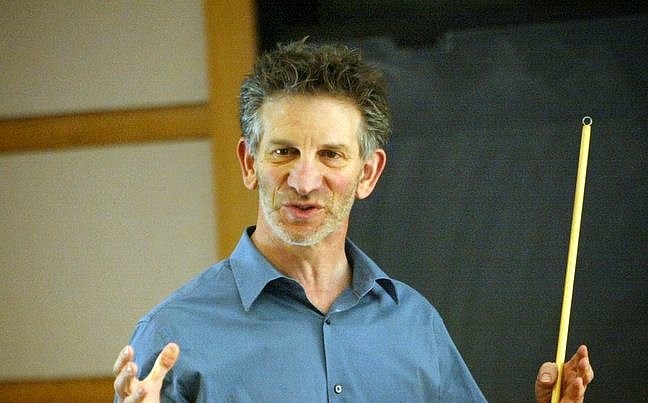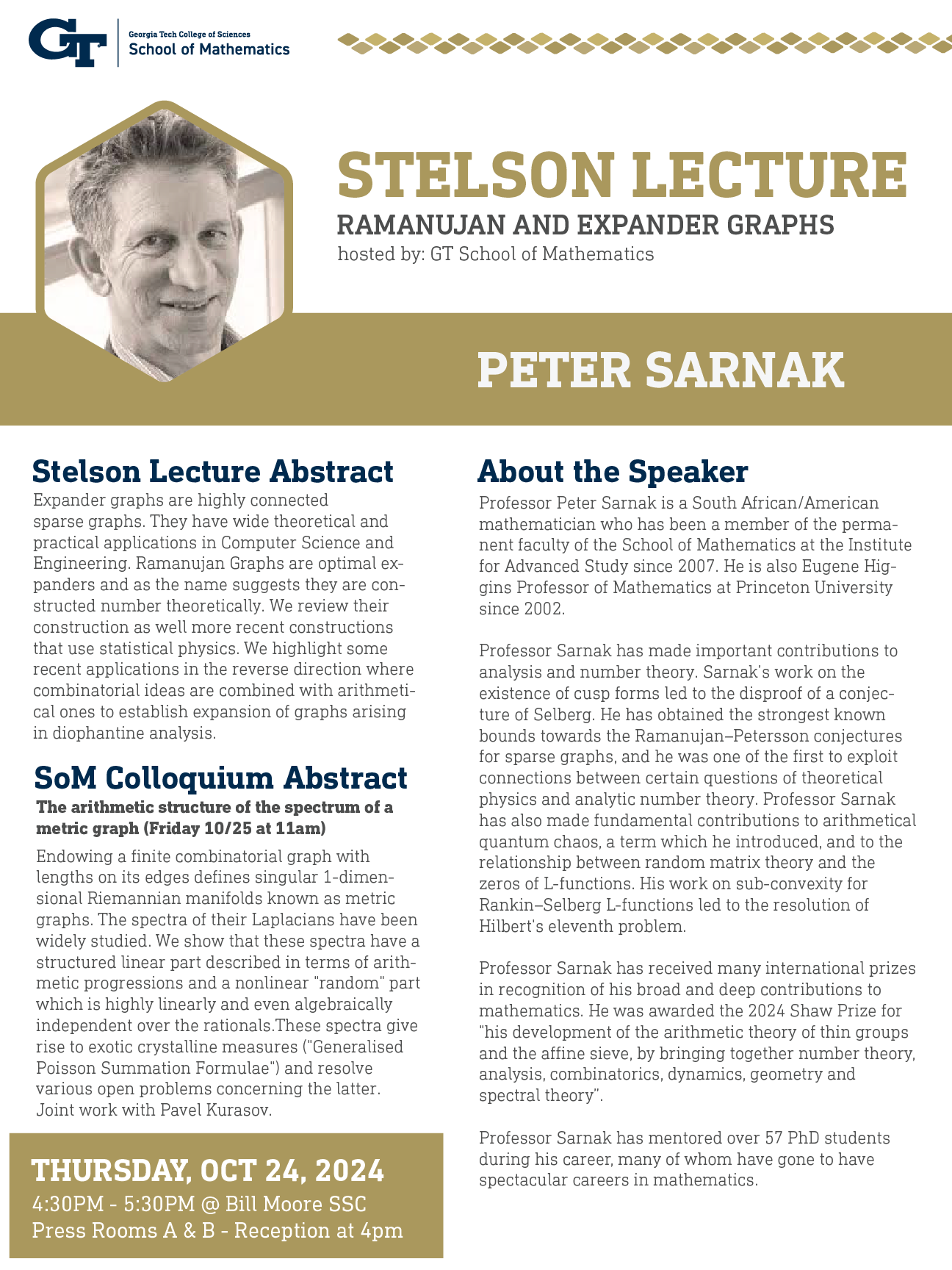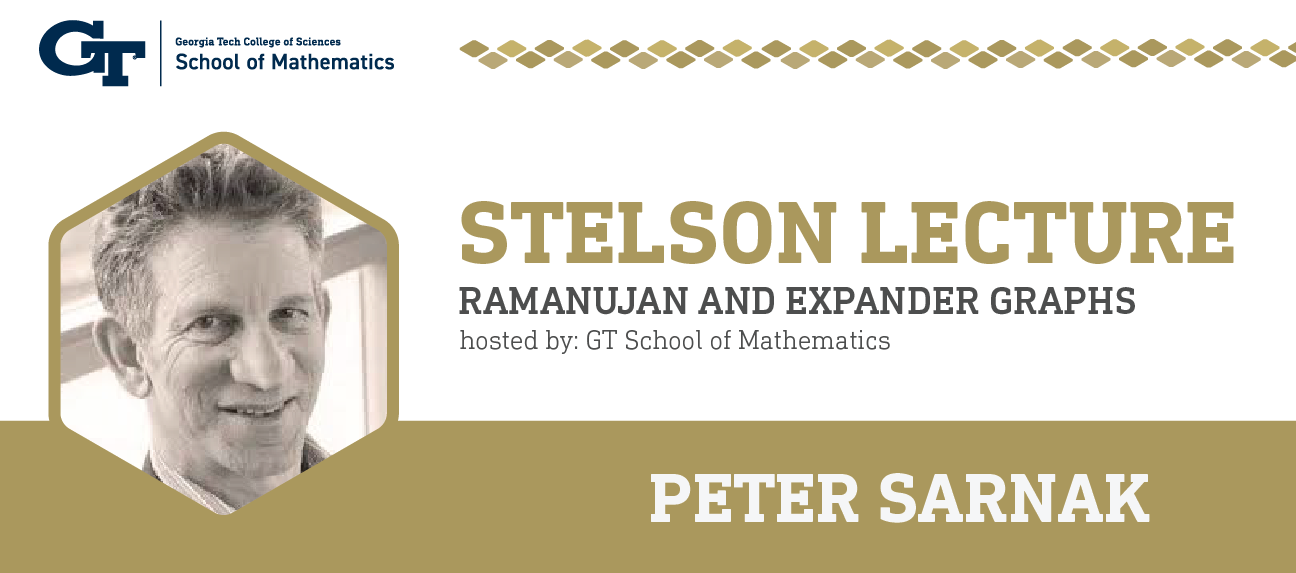Professor Peter Sarnak will give the Fall 2025 Stelson Lecture in the Bill Moore Student Success Center, Press Rooms A & B, on Thursday, October 24th at 4:30pm. There will also be an SoM Colloquium given on Friday, October 25th at 11am in Skiles 005/006.
Stelson Lecture Abstract
Ramanujan and Expander Graphs (Thursday 10/24 at 4:30pm in Bill Moore SSC Press Rooms A & B)
Expander graphs are highly connected sparse graphs. They have wide theoretical and practical applications in Computer Science and Engineering. Ramanujan Graphs are optimal expanders and as the name suggests they are constructed number theoretically. We review their construction as well more recent constructions that use statistical physics. We highlight some recent applications in the reverse direction where combinatorial ideas are combined with arithmetical ones to establish expansion of graphs arising in diophantine analysis.
SoM Colloquium Abstract
The Arithmetic Structure of the Spectrum of a Metric Graph (Friday 10/25 at 11am in Skiles 005/006)
Endowing a finite combinatorial graph with lengths on its edges defines singular 1-dimensional Riemannian manifolds known as metric graphs. The spectra of their Laplacians have been widely studied. We show that these spectra have a structured linear part described in terms of arithmetic progressions and a nonlinear "random" part which is highly linearly and even algebraically independent over the rationals.These spectra give rise to exotic crystalline measures ("Generalised Poisson Summation Formulae") and resolve various open problems concerning the latter. Joint work with Pavel Kurasov.
About the Speaker
Professor Peter Sarnak is a South African/American mathematician who has been a member of the permanent faculty of the School of Mathematics at the Institute for Advanced Study since 2007. He is also Eugene Higgins Professor of Mathematics at Princeton University since 2002. Professor Sarnak has made important contributions to analysis and number theory. Sarnak’s work on the existence of cusp forms led to the disproof of a conjecture of Selberg. He has obtained the strongest known bounds towards the Ramanujan–Petersson conjectures for sparse graphs, and he was one of the first to exploit connections between certain questions of theoretical physics and analytic number theory. Professor Sarnak has also made fundamental contributions to arithmetical quantum chaos, a term which he introduced, and to the relationship between random matrix theory and the zeros of L-functions. His work on sub-convexity for Rankin–Selberg L-functions led to the resolution of Hilbert's eleventh problem. Professor Sarnak has received many international prizes in recognition of his broad and deep contributions to mathematics. He was awarded the 2024 Shaw Prize for "his development of the arithmetic theory of thin groups and the affine sieve, by bringing together number theory, analysis, combinatorics, dynamics, geometry and spectral theory”. Professor Sarnak has mentored over 57 PhD students during his career, many of whom have gone to have spectacular careers in mathematics.






